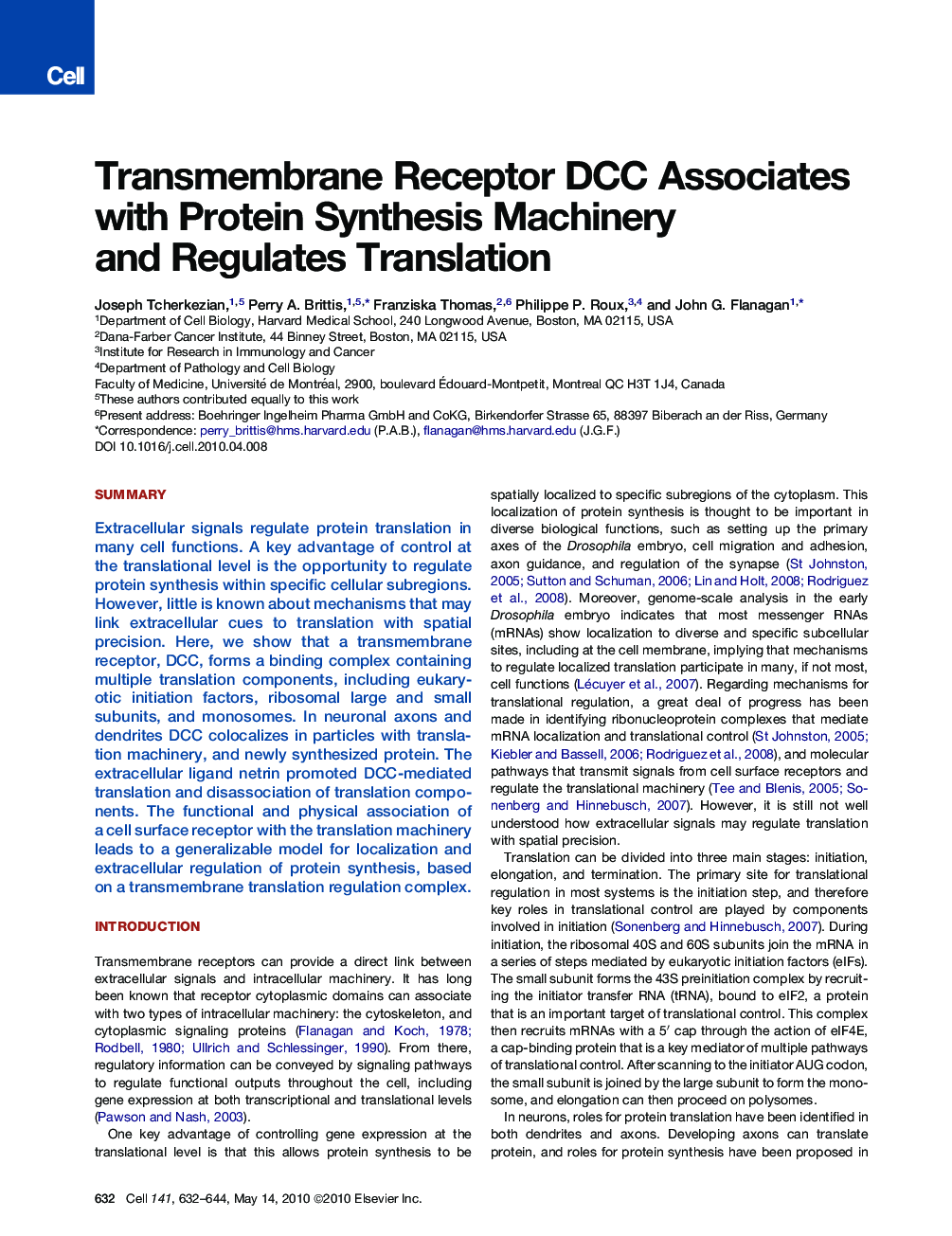| Article ID | Journal | Published Year | Pages | File Type |
|---|---|---|---|---|
| 2036843 | Cell | 2010 | 13 Pages |
SummaryExtracellular signals regulate protein translation in many cell functions. A key advantage of control at the translational level is the opportunity to regulate protein synthesis within specific cellular subregions. However, little is known about mechanisms that may link extracellular cues to translation with spatial precision. Here, we show that a transmembrane receptor, DCC, forms a binding complex containing multiple translation components, including eukaryotic initiation factors, ribosomal large and small subunits, and monosomes. In neuronal axons and dendrites DCC colocalizes in particles with translation machinery, and newly synthesized protein. The extracellular ligand netrin promoted DCC-mediated translation and disassociation of translation components. The functional and physical association of a cell surface receptor with the translation machinery leads to a generalizable model for localization and extracellular regulation of protein synthesis, based on a transmembrane translation regulation complex.
Graphical AbstractFigure optionsDownload full-size imageDownload high-quality image (368 K)Download as PowerPoint slideHighlights► Transmembrane receptor DCC forms a complex with initiation factors and ribosomes ► DCC colocalizes in puncta with translation machinery and newly synthesized protein ► Extracellular ligand netrin promotes DCC-mediated translation
